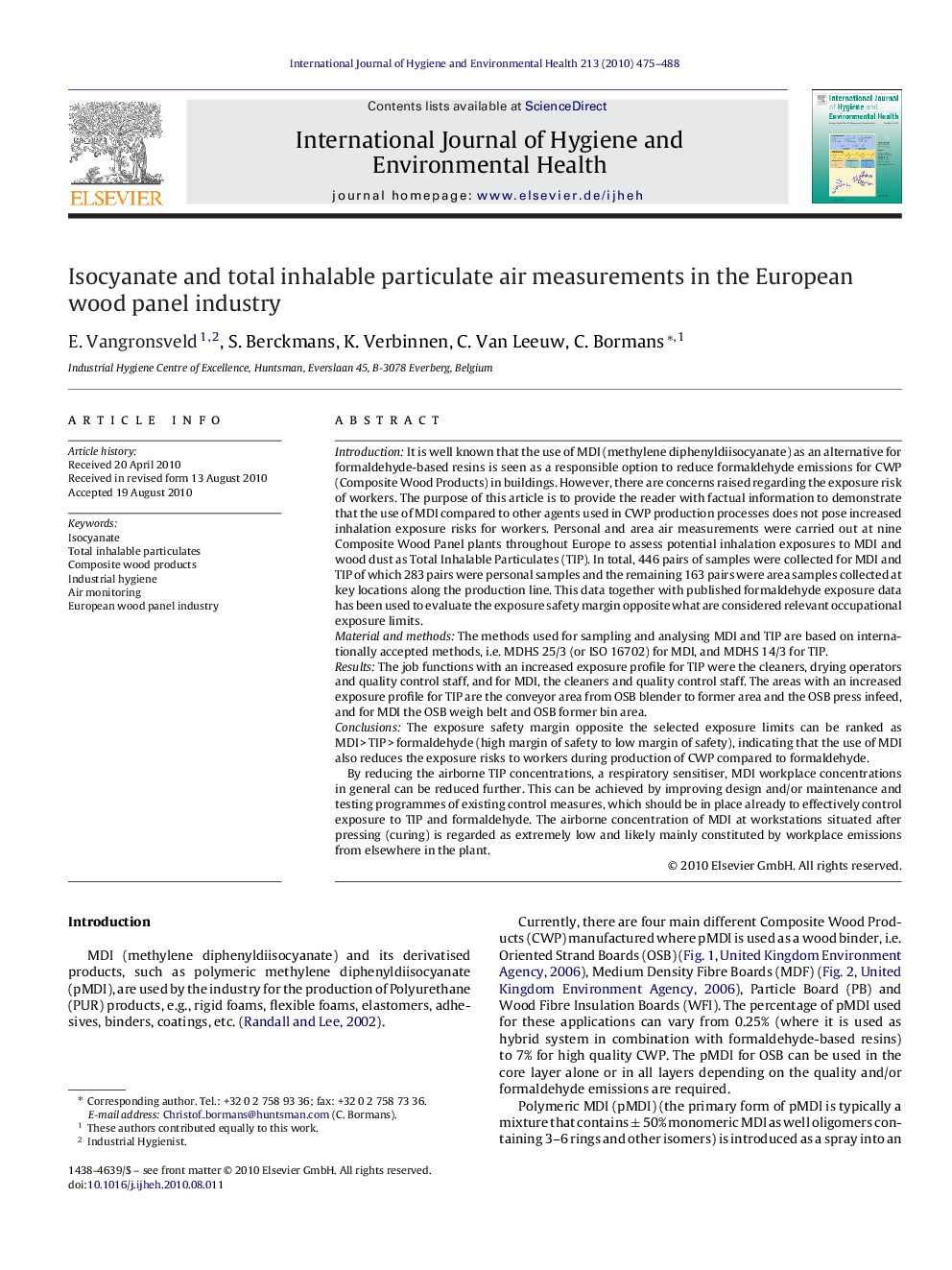| کد مقاله | کد نشریه | سال انتشار | مقاله انگلیسی | نسخه تمام متن |
|---|---|---|---|---|
| 2588673 | 1561918 | 2010 | 14 صفحه PDF | دانلود رایگان |

IntroductionIt is well known that the use of MDI (methylene diphenyldiisocyanate) as an alternative for formaldehyde-based resins is seen as a responsible option to reduce formaldehyde emissions for CWP (Composite Wood Products) in buildings. However, there are concerns raised regarding the exposure risk of workers. The purpose of this article is to provide the reader with factual information to demonstrate that the use of MDI compared to other agents used in CWP production processes does not pose increased inhalation exposure risks for workers. Personal and area air measurements were carried out at nine Composite Wood Panel plants throughout Europe to assess potential inhalation exposures to MDI and wood dust as Total Inhalable Particulates (TIP). In total, 446 pairs of samples were collected for MDI and TIP of which 283 pairs were personal samples and the remaining 163 pairs were area samples collected at key locations along the production line. This data together with published formaldehyde exposure data has been used to evaluate the exposure safety margin opposite what are considered relevant occupational exposure limits.Material and methodsThe methods used for sampling and analysing MDI and TIP are based on internationally accepted methods, i.e. MDHS 25/3 (or ISO 16702) for MDI, and MDHS 14/3 for TIP.ResultsThe job functions with an increased exposure profile for TIP were the cleaners, drying operators and quality control staff, and for MDI, the cleaners and quality control staff. The areas with an increased exposure profile for TIP are the conveyor area from OSB blender to former area and the OSB press infeed, and for MDI the OSB weigh belt and OSB former bin area.ConclusionsThe exposure safety margin opposite the selected exposure limits can be ranked as MDI > TIP > formaldehyde (high margin of safety to low margin of safety), indicating that the use of MDI also reduces the exposure risks to workers during production of CWP compared to formaldehyde.By reducing the airborne TIP concentrations, a respiratory sensitiser, MDI workplace concentrations in general can be reduced further. This can be achieved by improving design and/or maintenance and testing programmes of existing control measures, which should be in place already to effectively control exposure to TIP and formaldehyde. The airborne concentration of MDI at workstations situated after pressing (curing) is regarded as extremely low and likely mainly constituted by workplace emissions from elsewhere in the plant.
Journal: International Journal of Hygiene and Environmental Health - Volume 213, Issue 6, November 2010, Pages 475–488